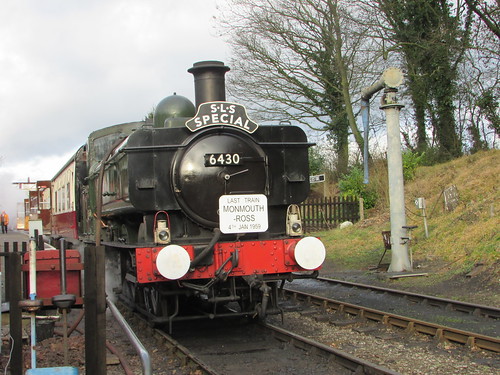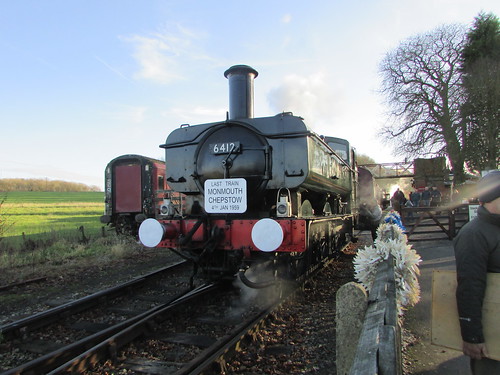skip to main |
skip to sidebar
Sunday 30th September 2018
After my whistle-stop tour of Hagia Sophia, Topkapi Palace and the Museum of Archaeology in the morning, the hotel restaurant was able to provide a wonderful soup with a selection of fresh bread and a Coca-Cola, after which I felt much better and started to plan more exploration for the afternoon. This time, I determined to make more use of my Instanbulkart in sampling public transport. The previous day, I'd travelled to 'Asian Turkey' by rail through the Marmaray Tunnel (landing on the Asian side a second time, during my Bosphorus Cruise, at Bakoz).
This time, I intended to reach 'Asian Turkey' by a public ferry from the waterfront so I walked downhill to Sirkeci (a 'quarter' in the Eminonu 'neighbourhood' of Fatih 'district') and studied the area more closely.

Istanbul, Turkey: Approaching the waterfront at Sirkeci on Ankara Avenue with a Sultanahmet line tram heading towards Katabas.
To my right was the car ferry terminal operated by IDO (privatised in 2011) with the car/passenger ferry 'Sahilbent' moored, but no activity (it was Sunday). Afterwards, I quickly identified what IDO call a 'conventional ferry' (single-hull, not high speed), with loading ramps at both ends, on the IDO fleet list here.

Istanbul, Turkey with 'Sahilbent' passenger/car ferry moored at Sirkeci ferry landing. This is the terminal for the short crossing to Harem.
I turned left and walked along the waterfront towards the Golden Horn, passing three large ferry waiting rooms each displaying electronic signage showing the time of the next departure and destination. Many of the larger passenger ferries bustling to-and-fro were modern and 'double-ended' with passenger ramps each end, like the 'SH-DURASU' I watched arriving at Eminonu (it was built 2015 in Turkey - brief information here)

Istanbul's Ferries: 'SH-DURASU', built 2015, arriving at Eminonu.
This seemed altogether too modern, compared with what I remembered from various films featuring Istanbul (including the 1963 James Bond Film 'From Russia with Love'). I had set my heart on one of the 'traditional' ferries with a bow, stern, funnel and side loading. The Wikipedia article here suggests most were made (or at least designed) by the Fairfield Shipbuilding and Engineering Company in Glasgow). When I had almost reached the Galata Bridge, I found a suitable ferry loading for Kadikoy and, within moments, my Instanbulkart had allowed me to board. Actually, the ferry was one of the more modern vessels, built in Turkey in 2008 ('M/S ŞH-FATİH', I think - brief information here).

Istanbul's Ferries: View along waterfront as the Kadikoy Ferry prepares to leave Eminonu with Topkapi Palace in the background.
As we crossed the Sea of Marmara, we left the Maiden's Tower to port and Topkapi Palace to starboard
 Istanbul's Ferries: Eminonu - Kadikoy, looking towards Bosphorus showing Maiden's Tower, First Bridge and (just visible) Second Bridge. A large cargo vessel is emerging from the Bosphorus
Istanbul's Ferries: Eminonu - Kadikoy, looking towards Bosphorus showing Maiden's Tower, First Bridge and (just visible) Second Bridge. A large cargo vessel is emerging from the Bosphorus

Istanbul's Ferries: Eminonu - Kadikoy: View of Topkapi Palace
By the time we approached the container port of Haydarpasa, we had crossed the Sea of Marmara, passing SeaLine 'Ro-Ro' Passenger/Cargo vessel 'Sea Partner' and container ship 'Warnow Beluga'.

Istanbul's Ferries: Eminonu - Kadikoy showing SeaLine 'Ro-Ro' Passenger/Cargo vessel 'Sea Partner' at Port of Haydarpasa.

Istanbul's Ferries: Eminonu - Kadikoy: Container ship 'Warnow Beluga' and container crane at Port of Haydarpasa.
I managed a decent picture of the Selimiye Barracks on the hill behind the port. Better known as Scutari, this was the location where Florence Nightingale started her remarkable work during the Crimean War.
 Istanbul's Ferries: Eminonu - Kadikoy: Port of Haydarpasa (Asian side) with two blue-painted container cranes and orange Straddle Cranes. In the background, the massive Selimiye Barracks.
Istanbul's Ferries: Eminonu - Kadikoy: Port of Haydarpasa (Asian side) with two blue-painted container cranes and orange Straddle Cranes. In the background, the massive Selimiye Barracks.
As we approached Kadikoy, I watched 'M/S Caddebostan' (built 1987 - brief information here) setting off back to the Istanbul.

Istanbul's Ferries: Eminonu - Kadikoy with ferry 'M/S Caddebostan' sailing behind the breakwater. Note on-shore grain silos.

Istanbul's Ferries: Eminonu - Kadikoy: Approaching Kadikoy with the fire-damaged Haydarpasa Railway Station visible extreme left.
Shortly before we docked at Kadikoy, we passed what was, until a serious fire in 2010, the busiest station in Turkey - Hydarpasa. The Ottoman-era neo-classical station building built in 1909 is now closed to trains, sheathed in scaffolding and being restored, its long-term future still unclear. There are plans for the new high-speed line from Ankara to join-up with the Marmaray Tunnel and provide a service to the European side but time scales appear fluid.

Istanbul's Ferries: Fire-damaged Haydarpasa Railway Station under restoration.
Ferry 'M/S ŞEHİT İLKER KARTER' left the berth as we approached Kadikoy. This ferry was built in 1980, also in a Turkish yard (brief information here). 'Sehit' means martyr - Ilker Carter (1943-1974) was a jet pilot in the Turkish Air Force, dying in Cyprus during operations following the Cypriot coup d'état.

Istanbul's Ferries, Eminonu - Kadikoy: Kadikoy ferry terminal with ferry 'S. Ilker Carter' departing as we arrive.
Related posts on other websites
The Marmaray Tunnel and railways
Marmaray Railway Engineering Project
Haydarpaşa railway station
Istanbul Ferries
Ferries in Istanbul (Wikipedia).
IDO fleet list.
Sehir Hatlari History.
Sehir Hatlari Modern ferry.
Related posts on this website
This is one of a number of posts describing my weekend in Istanbul, starting with Arriving in Istanbul.
Clicking on the 'Next report' link displays the post describing the next events. In this way, you may read about the weekend in sequence.
Next report
Alternately, clicking on the 'All my Istanbul reports' link displays all the posts on this weekend in reverse date-of-posting order.
All my Istanbul reports.
My pictures
Istanbul, Turkey.
Istanbul's Ferries: Eminonu - Kadikoy.
All my pictures in Turkey.
This is my 13th annual review since I started this blog. I'm definitely another year older, with the aches and pains to prove it, but still aware how very fortunate I have been.
OVERSEAS TRAVEL
In 2018, with my mobility noticeably impaired, I made two overseas trips - the first to Burma (Myanmar, as it is now known) and Nepal, the second a private train trip by 'Golden Eagle' to Armenia, Georgia and Azerbaijan. Returning from the 'Golden Eagle' trip, I also spent a weekend in Istanbul.
Burma and Nepal in 2018
I set off on 19th April and visited Yangon before travelling to Mon State where we made visits to various Drop In Centres for distributions and Monasteries. After a weekend at the Bagan Clinic, my friends and I made a trip to Chin State (staying in Kalay and Rith Lake and even making a brief visit to India) before returning to Bagan Medical Clinic for a second weekend. I made a distribution at Htee Pu school before the Doctor and I made a trip to Pyin Oo Lwin (where we visited two orphanages and a monastery) and then made a trip by rail to Nawngpeng over the famous Gokteik Viaduct, returning by car to Mandalay to catch a flight back to Yangon. Finally, the Doctor and I made a official visit to the railway at Bago.

Visit to Chin State 30th April 2018
The first of a series of posts on my 2018 trip to Burma is here and each post in the series has links to the subsequent episode and my pictures.
At the end of my Burma trip, I flew from Yangon to Kathmandu, transiting in Bangkok. I toured Kathmandu, took a morning 'Mountain Flight' to view the Himalayas, then flew to Pokhara (staying at the Tiger Mountain Lodge) before returning to Kathmandu for more sightseeing (including Bhaktapur City) before returning home, exhilarated but exhausted.
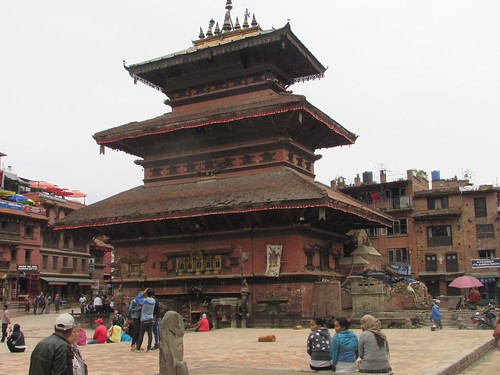 Bhaktapur City, Nepal, 14th May 2018.
Bhaktapur City, Nepal, 14th May 2018.
The first post about Nepal is here with similar links to later posts and my pictures.
Armenia, Georgia, Azerbaijan and Turkey in 2018
I set off on 29th September and visited Yerevan in Armenia for their Independence Day before travelling by train to Lake Sevan for more sightseeing. Our train then went to Georgia where we visited Tblisi (the capital) and Gori (birthplace of Stalin) before making an overnight journey into Azerbaijan which became delayed, shortening the time available for sightseeing in Baku whilst staying at the Four Seasons Hotel.

Yerevan, Armenia: Independendence Day 2018

Tbilisi, Georgia, viewed from Sioni Cathedral.

Baku, with its architectural contrasts, viewed from my room at the Four Seasons Hotel.
The first of a series of posts on this trip to three fascinating countries is here and each post in the series has links to the subsequent episode and my pictures.
Instanbul, Turkey in 2018
On leaving Baku by air, I flew to Istanbul for a weekend visit before returning home.

Istanbul, Turkey: View of the Bosphorus, with the first of three Bosphorus suspension bridges in the background.
The first of a short series of posts on Istanbul is here and each post has links to any later post and my pictures.
To find more about overseas visits I've made in previous years, see:-
Jan Ford's Travels (2001 onwards).
Jan Ford's Travels - The early trips (before 2001).
Jan Ford's Travels: Around the World in pictures (alphabetic list of countries with links to pictures).
TRAVEL IN THE UK
During the year I made a few trips (mainly by rail) to various destinations in the UK, some of which have blog posts:-
A Trip to Merseyside.
Another Day Trip to Ely.
To Hereford by rail.
Returning from Hereford by Rail.
To Altrincham via the former C.L.C..
Another Trip to Merseyside.

Ely: Ann Matthews being presented having graduated as Master of Arts in History.
RAILWAYS AND PRESERVATION
During 2018, I continued to support the Old Locomotive Committee and remained an active volunteer at The Battlefield Line and Peak Rail.
The Old Locomotive Committee
On Saturday, 14th April 2018 the 33rd Annual General Meeting of the Old Locomotive Committee (I currently serve as secretary) was held in the Museum of Liverpool. There's a short post here.

OLCO AGM 2018
The 'Lionsmeet' event was held on Saturday, 28th July 2018 at the at the Broomy Hill track of the Hereford Society of Model Engineers. My report is here.
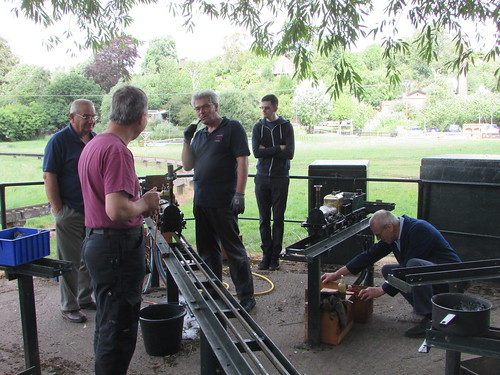
'Lionsmeet' 2018 28th July 2018: The covered steaming bays serving the elevated track radiate from a turntable.
You can find all my posts about OLCO here and there's more information on the Old Locomotive Committee's website (and becoming a member) here.
The Battlefield Line
I had a number of steam and Diesel Multiple Unit driving turns during the year, some of which are described in blog posts:-
Diesel Multiple Unit, Easter 2018.
More Fish and Chips.
Diesel Days.
5542 at the Battlefield Line.
Battlefield Line 'Family Fun Weekend'.
Preparing 5542 (part 1).
Battlefield Line Steam Gala 2018 (Part 1).
Santa Specials at the Battlefield Line 2018.

Shackerstone Station: Saturday, 30th June 2018.
You can find all my posts about the Battlefield Line here.
Incidentally, you can find all my posts about Diesel Multiple Units here or refer to the 'Index' here.
Peak Rail
I regularly drove steam during the year at Peak Rail and there are a couple of blog posts describing special events, with links to pictures:-
Peak Rail 1940s Weekend 2018.
Santa Specials at Peak Rail 2018.
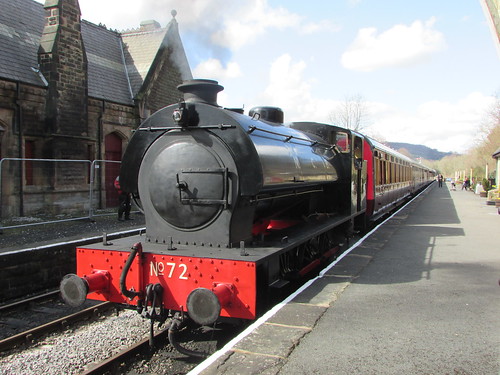
Peak Rail 2018: No. 72 on an 'Up' train pauses at Darley Dale.
You can find all my posts about Peak Rail here, with a collection of general pictures showing activities at Peak Rail during 2018 here.
Myanma Railways
During my visit to Burma in 2018 I again spent some time studying the railway system, resulting in a number of blog posts:-
A trip to Bago 10-May-2018.
Gokteik Viaduct Notes 9-May-2018.
Gokteik Viaduct 8-May-2018.
Train movements at Yangon Central station (3) 1-Apr-2018.
Train movements at Yangon Central station (2)31-Mar-2018.
You can find all my posts about Myanma Railways here or refer to the 'Index' here.
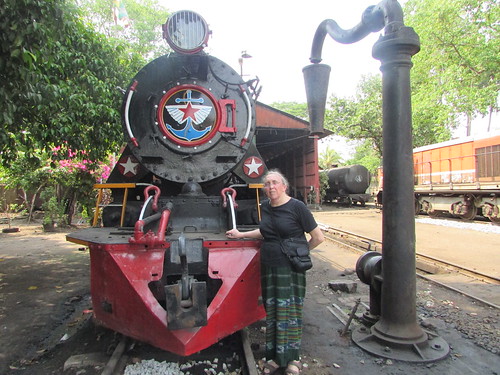
The Railway at Bago, 9th May 2018: For once, Jan looks quite happy.
You can find all my posts about Myanma Railways here.
BREWOOD HALL
The Brewood Garden Party was held at Brewood Hall for the sixth time on Saturday, 7th July 2018. There's a report here, with a link to my pictures.

Brewood Garden Party 2018: Cannock Wind Band performing.
A building dating from 1640 listed Grade II has a recurrent need for maintenance which I document from time-to-time. You can find all my posts about Brewood Hall here.
TY GWYN
Ty Gwyn is a small commercial woodland around 27 hectares in area near Corwen in Wales. There's a brief report on my 2018 visit here with a link to my pictures. To see all my posts on Ty Gwyn, click here.
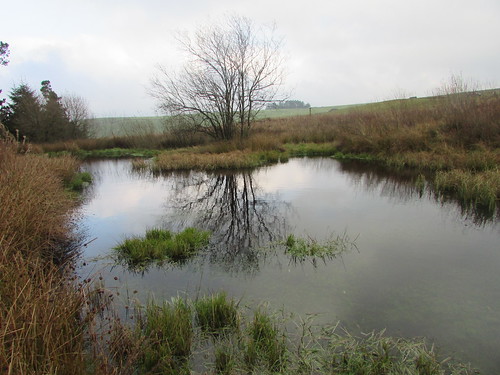
Ty Gwyn 2018: The Pool, looking east.
'ROAD TO MANDALAY' SOCIAL CONTRIBUTION
For a number of years, I've supported the charitable initiatives operated under the above name in Burma. I'm also currently a trustee of the Belmond Myanmar Foundation in the U.K. which also provides support to this work. When I visit Burma, I try to see as much as possible of the projects in hand. Educational Support is provided to a wide range of schools and orphanages (including the Orphans & Vulnerable Children Project in Mon State) and Medical Treatment to all ages (centred on the wonderful Bagan Medical Clinic).
You can find all my posts on Educational Support here.
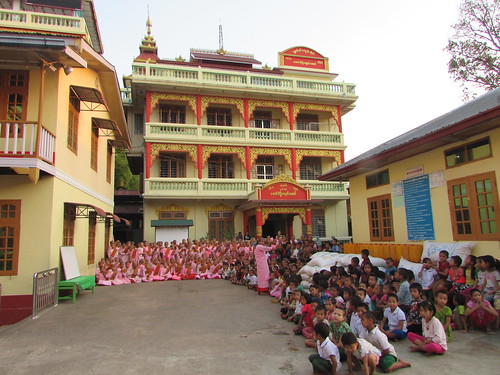
Shwe Sin Minn Nunnery and Orphanage: 6th May 2018
You can find all my posts on Medical Support here.
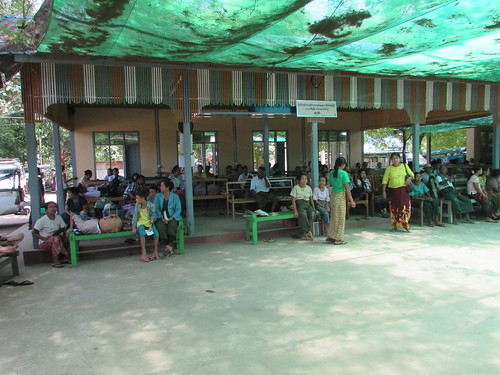
Bagan Clinic, Saturday 5th May 2018: Some of the patients waiting for consultations.
OTHER BLOG POSTS IN THE YEAR
This review covers trips and events during the year but doesn't include other types of post including:-
Technical or historical articles, mainly about railways;
Recollections of past events;
PREVIOUS ANNUAL REVIEWS
2017
2016
2015
2014
2013
2012
2011
2010
2009
2008
2007
2006
Sunday 30th September 2018
The hotel served an excellent and varied breakfast in the ground floor restaurant which occupies a light and airy modern conservatory at the rear of the property. I'd purchased a Museum Pass from the helpful receptionist Utkan. This credit card sized pass gives entry to all the government museums in Istanbul for five days from first use. These museums open at 9.00 o'clock and I'd hoped to start early worrying that visitor numbers would increase later.
I determined to visit Hagia Sophia Museum first, which I estimated would be perhaps a 15 minute walk from the hotel. The site was already busy when I arrived but, having purchased a Museum Pass, I quickly gained entry.
Hagia Sophia Museum

Hagia Sophia Museum, Istanbul: The public entrance. Note the massive buttresses.
Since its inauguration in 537 A.D. as a Byzantine Christian Cathedral, it has variously served as a Roman Catholic Cathedral, Greek Orthodox Cathedral and, for 478 years, as an Ottoman Mosque until turned into a museum by the secularist Kemal Ataturk in 1935. There is currently a movement to restore its religious use.
Entering the nave, I was I immediately impressed with the sheer scale of the building and its huge main dome.

Hagia Sophia Museum, Istanbul: The blue scaffolding is used for ongoing conservation work. Note how the weight of the windowed dome is transferred by 'pendentives' (3-sided portions of a sphere) onto four main pillars. In the background, one of two abutted 'semi-domes' resulting in a rectangular nave area.

Foreground: Omphalion (place of coronation of Emperors), rear: Muezzins' Loge, Hagia Sophia Museum, Istanbul

Minbar (pulpit for Imam), Hagia Sophia Museum, Istanbul

Hagia Sophia Museum, Istanbul: showing Flying buttresses.
I could have spent much longer here but I was anxious to move on before I became too tired.
Topkapi Palace Museum
It didn't take me long to walk from Hagia Sophia to the adjacent Great Square with the Sultan Ahmet III Fountain in front of the imposing Imperial Entrance to the gardens of the walled First Courtyard of Topkapi Palace.

Great Square, Istanbul: Left rear: Imperial Gate (leading to First Courtyard) Right foreground: Sultan Ahmed III Fountain.
Sultan Mehmed II conquered Istanbul in 1453 and commissioned the building of Topkapi as a Palace and Administrative Centre, replacing (or incorporating) earlier construction. Its irregular layout with disparate buildings and pavilons was unlike other European or Oriental palaces. The site is divided into four courtyards and the Harem but during my exploration I didn't have the useful 5-page plan which can be found on the official website here.
Topkapi was used by the Ottoman Rulers from 1478 to 1853 but, in 1843, Sultan Abdulmecid I decided that a medieval palace was no longer appropriate and he commissioned the building of the Dolmabahce Palace overlooking the Bosphorus in the European Rococo style.

Bosphorus Cruise: Dolmabahce Palace in the European Rococo style, built between 1843 and 1856.
As soon as the new palace was completed in 1856, Topkapi became accommodation for 'ranked officers'. With independence in 1924, Kemal Ataturk made Topkapi a public museum, in an action signifying a 'new beginning' for Turkey.
In the First Courtyard I found quite a 'scrum' of people buying admission tickets but, with my Museum Pass, I was able to skip this and head directly through the electronic admission gate at the Gate of Salutation where there was a cursory, friendly security check and then I was free to explore.

The Gate of Salutation, leading to Second Courtyard, Topkapi Palace Museum, Istanbul
Sultan Mehmed II established protocols to ensure his seclusion, including strict silence in the inner courtyards and, even today, I found the gardens of the courtyards pleasant and tranquil (although I admit I tended to avoid the busier areas like the exhibitions in the Outer Treasury).

Topkapi Palace Museum, Istanbul: Second Courtyard L: Imperial Council, R: Outer Treasury, Rear: Tower of Justice.

Topkapi Palace Museum, Istanbul: Imperial Council Building.

Topkapi Palace Museum, Istanbul: Entrance to the Third Courtyard through the Gate of Felicity.

Topkapi Palace Museum, Istanbul: The Third Courtyard. The white, domed building is the Library of Ahmed III with the Audience Chamber to the right.
For some reason, admission to the Harem is not included in the basic 'Topkapi' ticket but with my 'All Areas' Museum Pass, that was not a problem. However, whilst I hope I'm not a strident feminist, I do have a problem with both the historic and current position of women in some societies although the Harem is currently presented as private accommodation for the Sultan and his extended family. So I was keen to visit the Harem. It's a large, rabbit-warren of a place with over 300 rooms and, in general, lower standards of decoration seemed to apply although rooms used by the Sultan were fairly grand. Some of the areas struck me as more gloomy and gaol-like than the tranquil courtyards I'd enjoyed earlier (or perhaps my prejudices are showing).

Topkapi Palace Museum, Istanbul: The Harem.

Topkapi Palace Museum, Istanbul: The Apartments of the Queen Mother.

Topkapi Palace Museum, Istanbul: Imperial Hall with Throne of the Sultan.

Topkapi Palace Museum, Istanbul: Privy Chamber of Sultan Murad III. Built in 1578, it is an important example of Ottoman architecture.

Topkapi Palace Museum, Istanbul: The Courtyard of the Favourites in the Harem.

Topkapi Palace Museum, Istanbul: The 'Golden Road' passage in the Harem.
It would take days to do justice to this museum but I did form the impression that the Ottoman Rulers enjoyed quite an agreeable lifestyle in the pleasant surroundings of Topkapi. Because of its strategic location, controlling the trade route connecting the Black Sea and the Mediterranean, Istanbul has always been important, during Greek, Roman, Byzantine, Ottoman and modern eras. The detailed history is very complex but I afterwards found a fascinating animation on YouTube here titled 'The History of Anatolia - Year by Year'. 'Anatolia' is roughly similar to modern Asian Turkey and was the homeland of what expanded to become the Turkish or Ottoman Empire. However, worried that I would become over-tired touring Topkapi Palace, I decided to leave after just a fascinating glimpse, with the intention of walking back to my hotel to rest. It was pleasant walking through the old streets but, when I came upon the entrance of the archaeological museum the principle of "I may never pass this way again" kicked-in and I decided I should at least make a brief visit.
Archaeological Museum
Opened in 1891 this is a large museum with over one million Greek, Roman and Byzantine artifacts. It's currently undergoing fairly major reconstruction limiting what is on display but I nevertheless found it fascinating. It's very much a 'traditional' museum - exhibits you can walk right up to, with just a card in Turkish and English by way of interpretation. Being rather old-fashioned this suited me very well.

Museum of Archaeology, Istanbul
In the museum grounds, there was a reconstruction of a 9th century trading ship 10m long, lateen rigged, based on evidence from a shipwreck excavated in Theodosian Harbour. The lateen rig is used in the Eastern Mediterranean and in Egypt on the felucca design, so I was reminded of the felucca trips I'd enjoyed in Egypt (posts here and here).

Museum of Archaeology, Istanbul: A reconstruction of a 9th century trading ship 10m long, lateen rigged, based on evidence from a shipwreck excavated in Theodosian Harbour.
The were displays on various topics - the perennial water supply problems, the Golden Horn Chain, the 19th century restoration of Hagia Sophia by the Fossati Brothers.
Elaborate aqueducts were originally used to bring in water, feeding hundreds of open and enclosed cisterns with tubular carved stone water mains.

Museum of Archaeology, Istanbul: Sections of carved marble water mains.
The Golden Horn Chain was a large chain pulled across from Constantinople to the old Tower of Galata to prevent unwanted ships from entering the Golden Horn Moorings.

Museum of Archaeology, Istanbul: Remains of the Golden Horn Chain, used to close-off the moorings of the Golden Horn to enemy ships and a painting showing fortified Constantinople.
Various artifacts from different periods were on display, such as this section of a Babylonian ceremonial procession street featuring repeated lions in relief. The original was 300 metres long.

Section of Babylonian ceremonial procession street featuring repeated lions in relief.
Perhaps most impressive was the profusion of Greek and Roman statuary. There were so many important works (and so many visitors) that I'm afraid I didn't attempt photography. So I reluctantly left the museum and slowly walked back to my hotel (pausing to top-up my Instanbulkart with some help from a friendly local in the hope that my energy level would revive). The hotel restaurant was able to provide a wonderful soup with a selection of fresh bread and a Coca-Cola, after which I felt much better and started to plan more exploration for the afternoon.
Related posts on other websites
Hagia Sophia Museum
It's worth looking at the Wikipedia article here and the Hagia Sophia Museum Website here (in particular, the links at the bottom of the home page to History/Interior/Exterior).
Topkapi Palace Museum
For more information, see the Wikipedia article here (there's a detailed plan of the Harem and a number of excellent photographs here) or the Topkapi Palace Museum Website here (there's a brief history here, an architectural summary here, information on the various collections here) and a 5-page plan of the site here.
Archaeological Museum
There's a Wikipedia article here.
The Ministry of Culture and Tourism has a site here.
Related posts on this website
This is one of a number of posts describing my weekend in Istanbul, starting with Arriving in Istanbul.
Clicking on the 'Next report' link displays the post describing the next events. In this way, you may read about the weekend in sequence.
Next report.
Alternately, clicking on the 'All my Istanbul reports' link displays all the posts on this weekend in reverse date-of-posting order.
All my Istanbul reports.
My pictures
Istanbul, Turkey.
Hagia Sophia Museum, Istanbul.
Topkapi Palace Museum.
Museum of Archaeology, Istanbul.
All my pictures in Turkey.




 Istanbul's Ferries: Eminonu - Kadikoy, looking towards Bosphorus showing Maiden's Tower, First Bridge and (just visible) Second Bridge. A large cargo vessel is emerging from the Bosphorus
Istanbul's Ferries: Eminonu - Kadikoy, looking towards Bosphorus showing Maiden's Tower, First Bridge and (just visible) Second Bridge. A large cargo vessel is emerging from the Bosphorus



 Istanbul's Ferries: Eminonu - Kadikoy: Port of Haydarpasa (Asian side) with two blue-painted container cranes and orange Straddle Cranes. In the background, the massive Selimiye Barracks.
Istanbul's Ferries: Eminonu - Kadikoy: Port of Haydarpasa (Asian side) with two blue-painted container cranes and orange Straddle Cranes. In the background, the massive Selimiye Barracks.











































